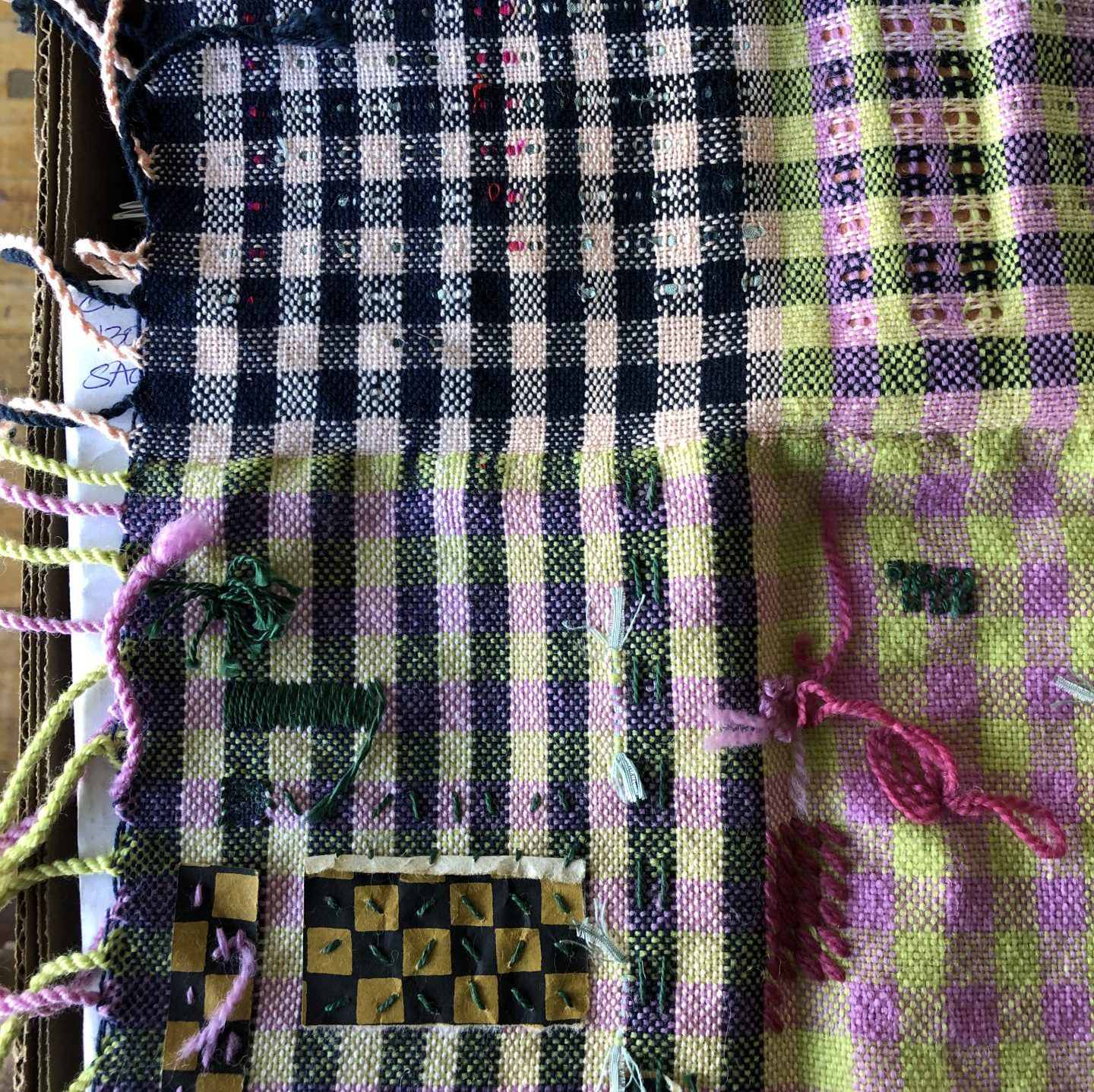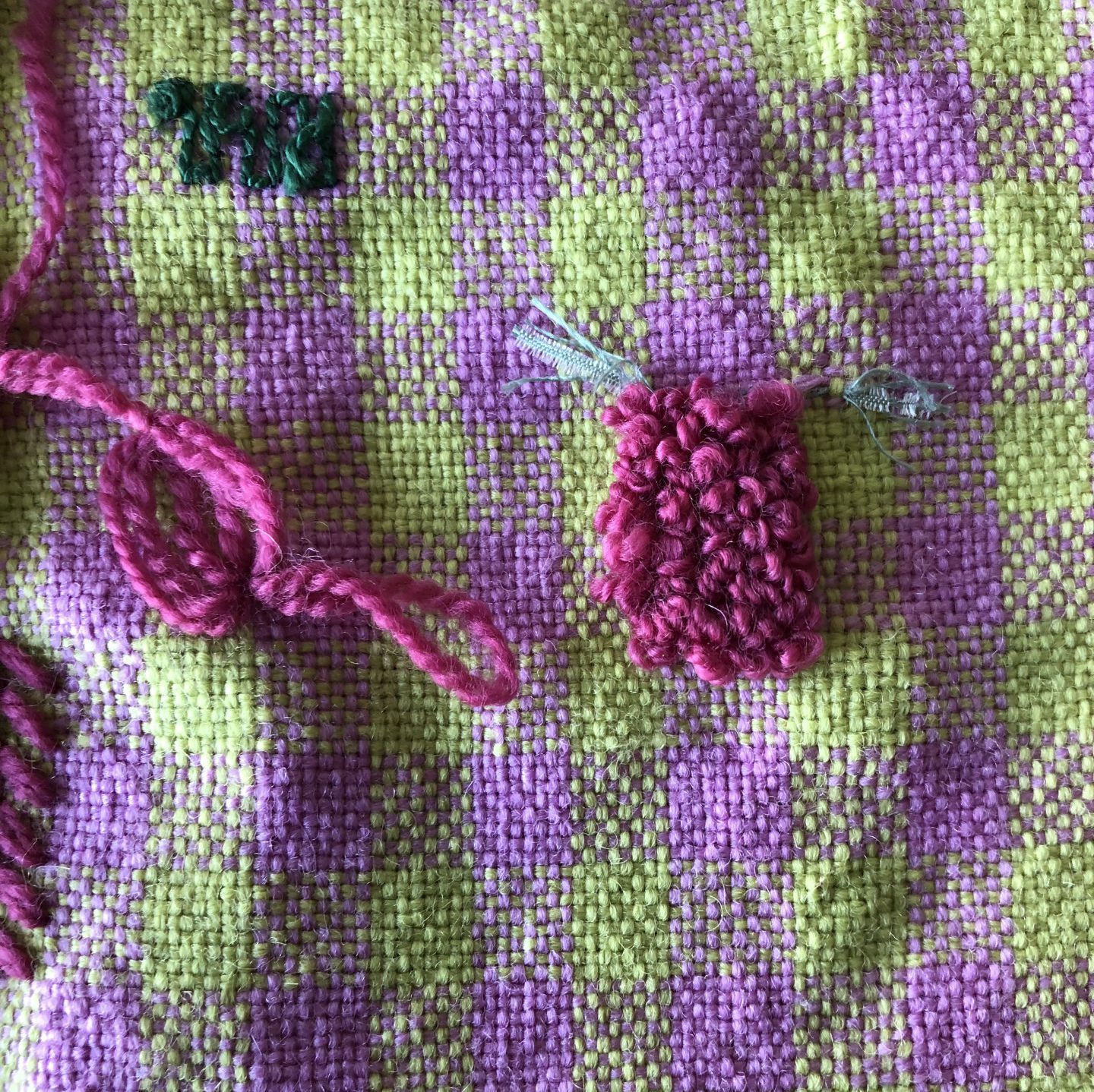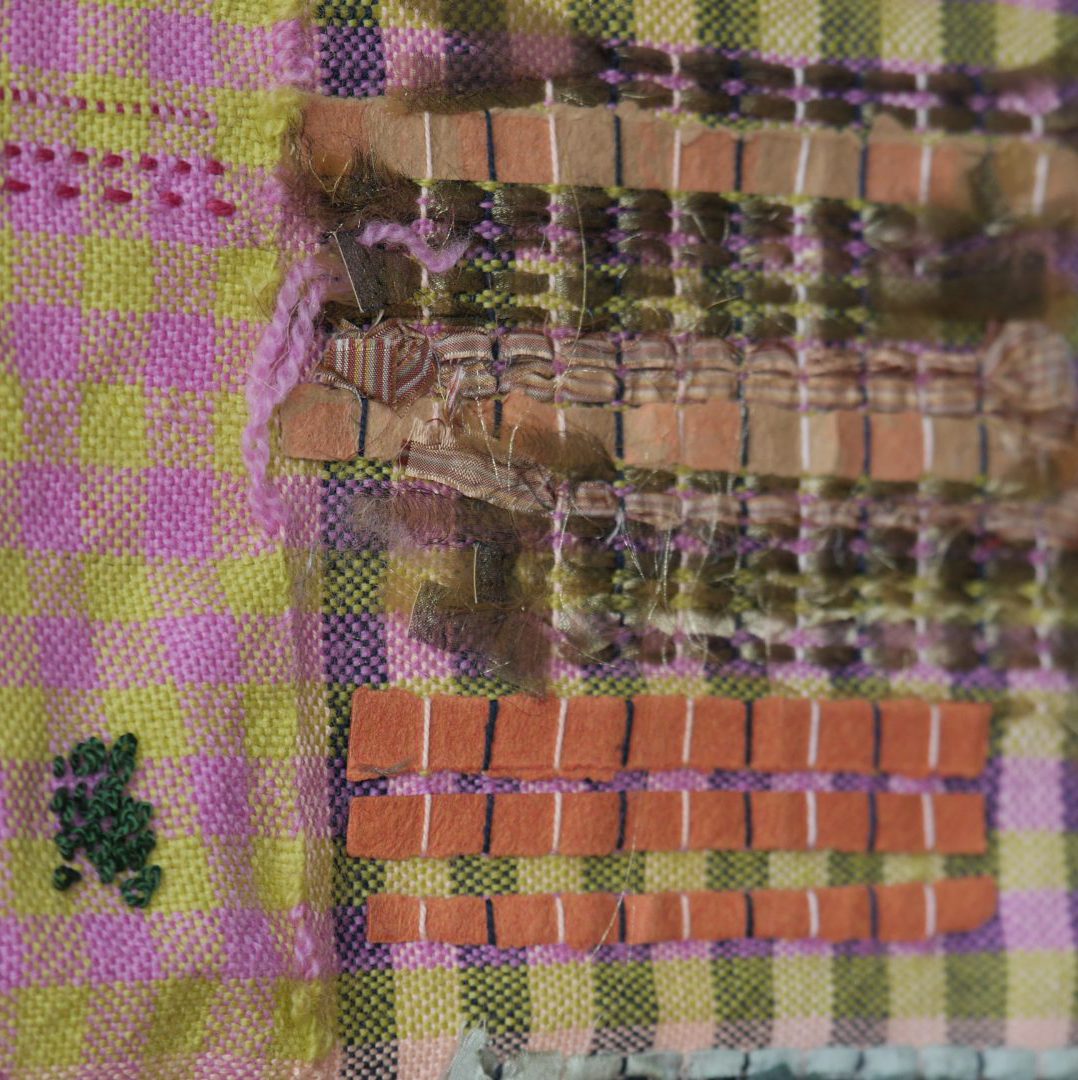
ANIE TOOLE // Quebec City, Quebec, Canada
Weaving and printmaking I achieve with equipment in shared facilities in artist-run centers, places that have been inaccessible since March 2020. It is not only the tools and the machines that have been lost, but the interaction with other artists that these spaces cultivate.
The afternoon they announced my children’s school closures, I went straight to the art store. I bought rolls of paper, paintbrushes, markers, clay. What else would we need to get through this?
Restricted in activities and with more time on our hands, our family of five has explored many activities. We have done figure drawing, with everyone taking a turn to be the model, we painted nature mortes, discovered baked clay, altered books for book art, painted with our feet, tattooed ourselves with watercolor pochoir and with henna, braided bracelets, created sculptures in paper mâché, drew mangas and comics, participated in mail art, papermaking, ink making from foraged materials, … and there is more to come. Collective artmaking draws us in, we do it in subgroups or all together, it’s quieting and introspective, messy and exploratory. Our teenager is always reluctant to participate, but once he gets started, he enters an irresistible creative place, and he is the last to leave the table.
I do meditative, gestural painting once the children are in bed, as a way to relax and decompress the intense day. Sometimes I quilt. The sewing machine has been mainly reassigned as a tool for mask sewing.
On the mothering front, art has brought us together, has kept me sane.
On the artist front, I had artwork to finish for early spring, a looming exhibit deadline. Now in a different studio, with different equipment and a different schedule. Smaller space, smaller loom, smaller pots for dyeing, much less time. My weaving practice, often with naturally dyed threads, was slow and introspective before the pandemic. It’s slowed down to new levels now.
While I work at the loom or at my grandma’s sewing machine, I feel a connection with past generations of textile makers. Repeating the gestures and the sequence of thread manipulations to produce a textile, repeating the motions, motions shared with others making cloth at that moment.
Twice so far, I have used the current warp, which I always plan a bit longer than what I need, to make another artwork. The artwork’s starting point is whatever is on my loom at that moment. There is no time to start from scratch, these small artworks are part of a greater whole.
The pandemic has made my work sharper: new space, new tools, less time. I express the same concept only with less. Art is more solitary. I grow tired of online interactions. I’m not sure how I feel about digital exhibits. I send more mail, use heritage techniques, I make do with materials.
Art fills most of my time, probably just as much as before the pandemic, but it’s different now. More art with family, slower art and therapeutic making for myself. Art enters my domestic space, the domestic space enters my art. Art allows me to engage, with others, with myself, with the past and the future.



